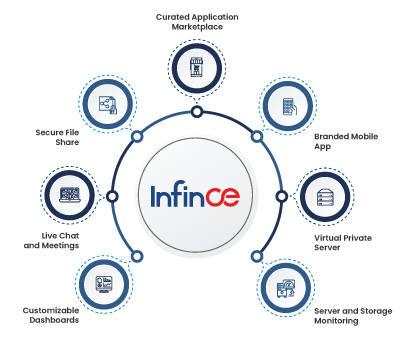Any business not having a website in today’s digital age not just run the risk of losing potential customers on a large scale, but also attracts serious questions on its standing as a credible firm. With business websites now simple and cheap to set up, businesses no longer have any excuse for not having a website in any case.
The Domain Name
The first step in building a website is choosing an available web address and registering the domain name. The popular names in website domain registration are GoDaddy and BigRock, among others. There are several others providers as well, and competition among the different players means very low rates on offer for the customer.
It is a good practice to register not just the .com extension for the website name, but also all the other popular extensions, such as .net, .info and any country-specific extensions such as .co.uk, .co.in and more. Consumers overwhelmingly use .com when entering a web address, but competitors taking control of other extensions for the same domain name may create serious issues for the business down the lane.
Having secured the domain name, there are many options for small businesses to set up the website.
The Conventional Hosting Route
The conventional method of subscribing of setting up a website is taking up hosting space and deploying a web admin to monitor the website on a 24×7 basis. The popular names in the hosting space are Hostgator, Amazon AWS, and others. Here again, competition means high-quality services for very low rates.
If in-house talent to design the website is not available, freelance websites such as UpWork offer businesses access to highly creative and talented designers and content writers, to design the web page. The rates are around $10 – $20 per hour.
Ready-Made Templates
Rather than painstakingly “reinvent the wheel”, businesses could access ready-made templates and website builders available in the net. The two popular options today are Wix and Weebly.
Wix offers a very large collection of ready to build templates, with an intuitive DIY builder thrown in. The easy to use interface makes it a perfect choice for non-technical users, who can set up a fairly good website on the fly. The platform offers a good app market as well.
Weebly offers ready-made templates and simple tools to create highly advanced web pages without writing a single line of code. The intuitive drag and drop elements make website creation and editing especially easy. Weebly’s responsive themes facilitate generating mobile-optimized websites on-the-fly.
While Wix and Weebly are perfect for generic websites or for selling a limited number of products, businesses that need to set up a proper e-commerce suite may consider Volusion e-commerce suite, which helps users create and manage an online store, sell products, and market your business.
Some of the alternatives to Wix and Weebly include Squarespace, Duda, Sitey, Webs, and Jimdo, among others.
Almost all the providers, including Wix and Weebly, offer free plans, allowing small business owners to start a small business website without spending a penny. However paid subscriptions get better features such as website stats, video, and audio support, removal of Wix branding, and other handy functionality. Paid plans start at $15 per month.
WordPress Website
Small to medium businesses who are somewhat tech-savvy but cannot afford to invest too much expertise into their website would do well to consider a WordPress website. The advantage of a WordPress website is access to unlimited features and functionality.
Creating a WordPress website is a 3-step process
- Sign-up for hosting
- Choosing any suitable WordPress theme. There are thousands of ready-made responsive themes on offer.
- Customize the theme to design the site.
WordPress is an intermediate website builder, and users may set up a WordPress website without any programming knowledge. However, WordPress has a traditional edit menu, and as such, users may require familiarity with backend menu. The process is fairly easy though, and it is possible to create a fairly decent website in under an hour.
While it is technically possible to set up a WordPress website for free, businesses short of in-house expertise would find it more convenient to subscribe to easy packages, which start from just $2.95 per month.
Two popular e-commerce solutions using the WordPress platform are Shopify and WooCommerce.
Creating an e-commerce website using Shopify is as easy as signing up, uploading the product details, and start selling. The hundreds of themes and extensions on offer facilitate easy customization. However, Shopify doesn’t offer access to the direct code, limiting the ability to customize beyond a point.
WooCommerce is another advanced WordPress plugin, which also allows converting a regular WordPress website into a full-fledged e-commerce store. The significant advantage of WooCommerce is full access to the source code, throwing open the scope for unbridled customization.
Several providers such as Bluehost offers affordable all-in-one package, which may include the domain name registration, a business email account, and the WordPress website.
Regardless of the route chosen, never underestimate the importance of clean design, powerful content, and SEO best practices. A user decides whether to stay or leave a website in less than 3 seconds. As such it is imperative to make a good first impression. Clear navigation, action buttons, an overall minimalistic design, and constant monitoring to ensure speedy downloads all go in the way to making the website a powerful catalyst for the success of your business.





